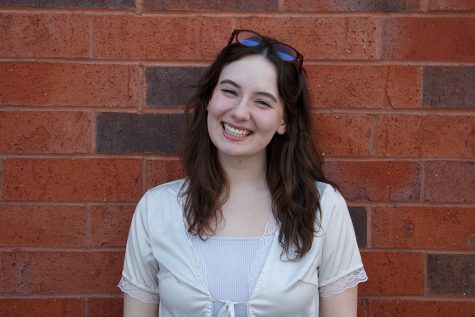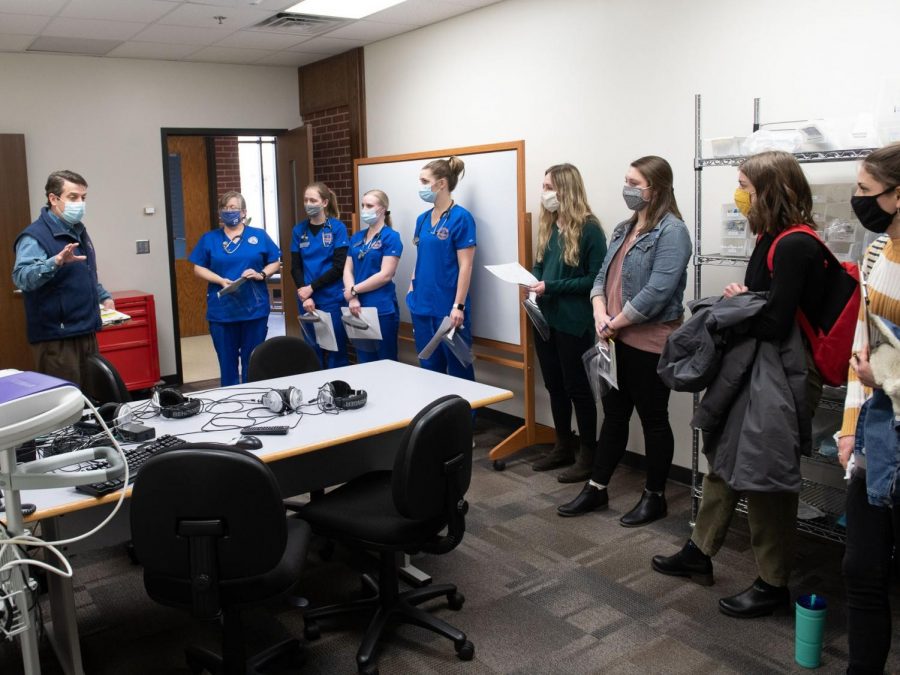Interprofessional relations encouraged through new simulation lab
Nursing and communication sciences and disorders departments unite
Photo by SUBMITTED
“Teamwork and collaboration are a staple of what we are going to be doing — the lab really brought that out,” Phelps said.
Carissa Phelps, a first-year graduate student in the communication sciences and disorders program, is currently taking a course on aphasia.
The class dedicates itself to teaching students how to diagnose and treat aphasia, a communication disorder often occurring as the result of a stroke in older adults, and other similar language disorders.
“Typically, we do a lot of classroom work where we talk about how we would go about assessment and intervention,” Phelps said. “However, we don’t usually get hands-on experience until we’re into our externships.”
That changed this year after the nursing and CSD departments decided to join forces to utilize the resources available to them.
As of this year, Phelps and her classmates have had the opportunity to work side-by-side with nursing students in one of the new simulation labs in the nursing building on campus.
There are six rooms in the College of Nursing where these simulations can be carried out, said Gunnar Larson, the associate director of the clinical learning lab.
In these simulations, Larson said students work with computerized mannequins and standardized patients, who are people or volunteers standing in for patients.
“Students come to the lab and work on a case where they must take care of the patient,” Larson said.
The simulations are utilized at varying levels, Larson said. Students from several courses are provided varied experiences in the lab to prepare them for the clinical setting.
Because of COVID-19 restrictions in place at UW-Eau Claire, only two students are permitted per lab. They must be fully masked and as socially distant as possible.
Each room contains several cameras and monitors, Larson said, that are designed to allow for classmates who aren’t actively participating to observe from online.
Over the years, Larson said, the nursing department has collaborated with other departments, offering more interprofessional learning opportunities. The most recent of those connections has been with the CSD department.
“I had never worked alongside nursing students before this,” Phelps said. “If I’m going to be working in a hospital after school, they’re going to be a core aspect to what I do. This was a fantastic opportunity to see their role and learn how we can collaborate.”
Phelps participated in the first wave of the simulation. While it wasn’t perfect at first, she said the professors worked together to make the experience a good one.
Her experiences with the simulation lab, Phelps said, were not only helpful in gaining new perspectives but were also encouraging when looking to join the program.
“Hands-on experience is what the CSD department is all about,” Phelps said. “This was very characteristic of them to go above and beyond to ensure us more of these experiences — especially during COVID-19.”
Due to the pandemic, the departments have paused sending students to a number of the clinic settings, Larson said, including pediatric and O.B. clinical sites. As a result, they increased the number of simulations available.
Despite the pandemic, Larson said, the nursing department was eager to continue growing these interprofessional relations — and are still eager now.
“In some ways, because COVID-19, it all came together and worked out in a better way,” Larson said. “We realized just how good of an idea this was after we started doing it. That led to us prioritizing the lab and making it into something we will continue in the future.”
Phelps said she is grateful to the department for working around those limitations and continuing to provide collaborative training. She said it’s important for them to be able to work as a team — the lab directly helps that skill development.
Schutte can be reached at [email protected].

Grace Schutte is a fourth-year creative writing and Spanish student. This is her fifth semester on staff, having previously served as a staff writer, Chief Copy Editor, a freelance writer, Currents Editor, and now as the OP/ED Editor. She is currently daydreaming about living softly. She is very content.

